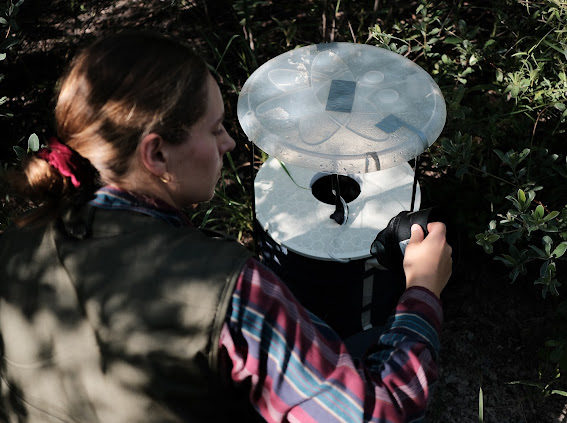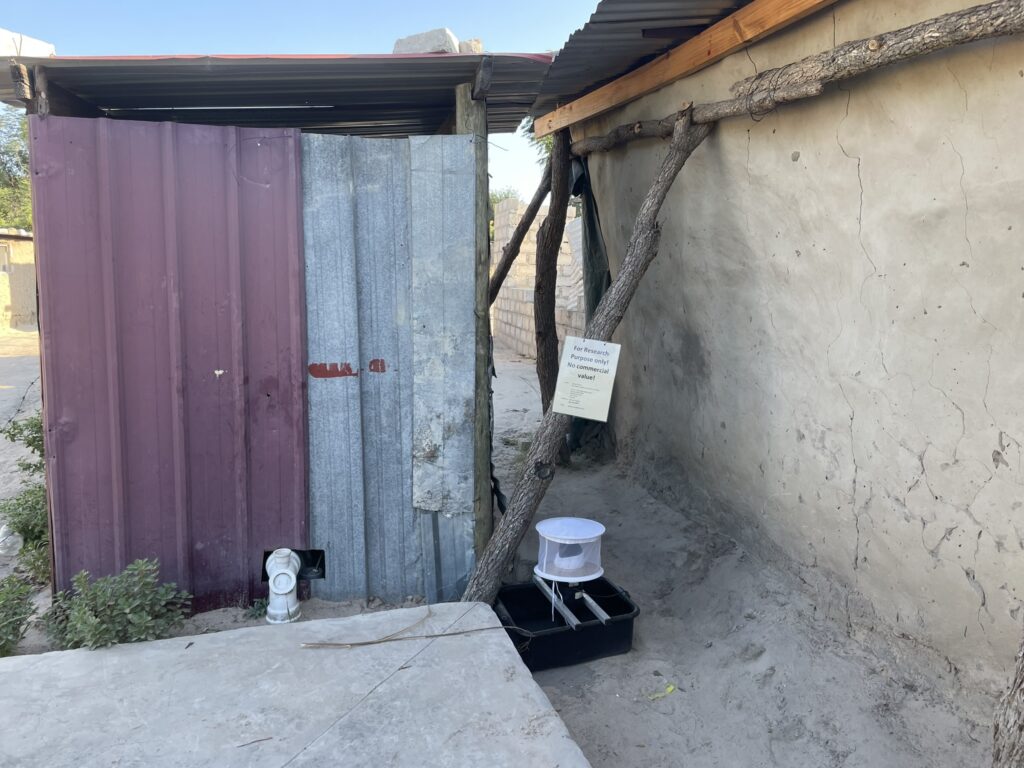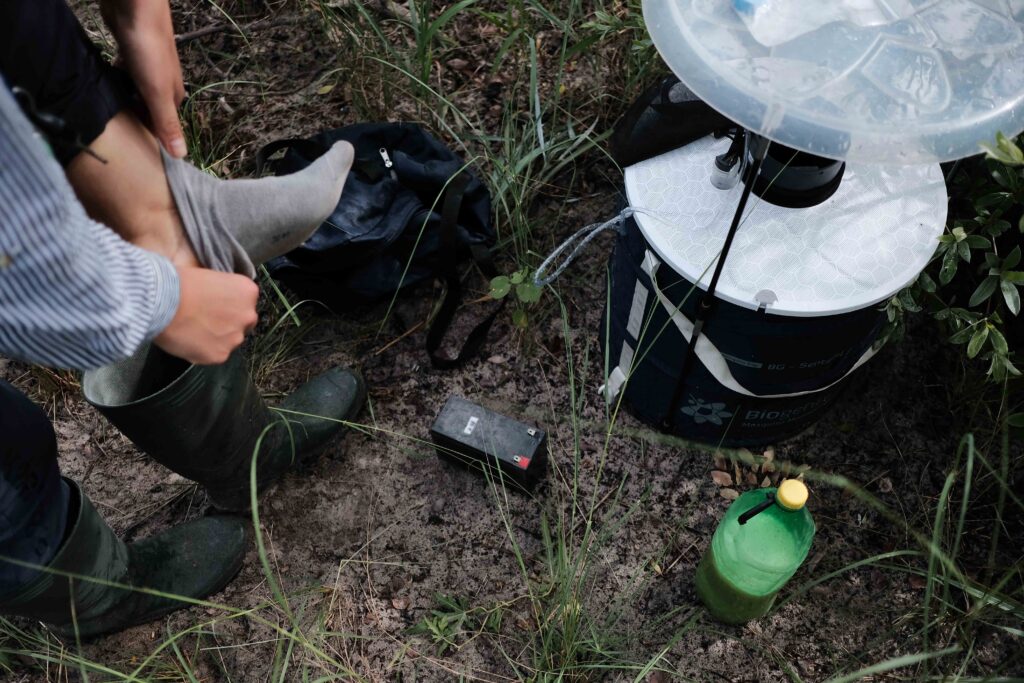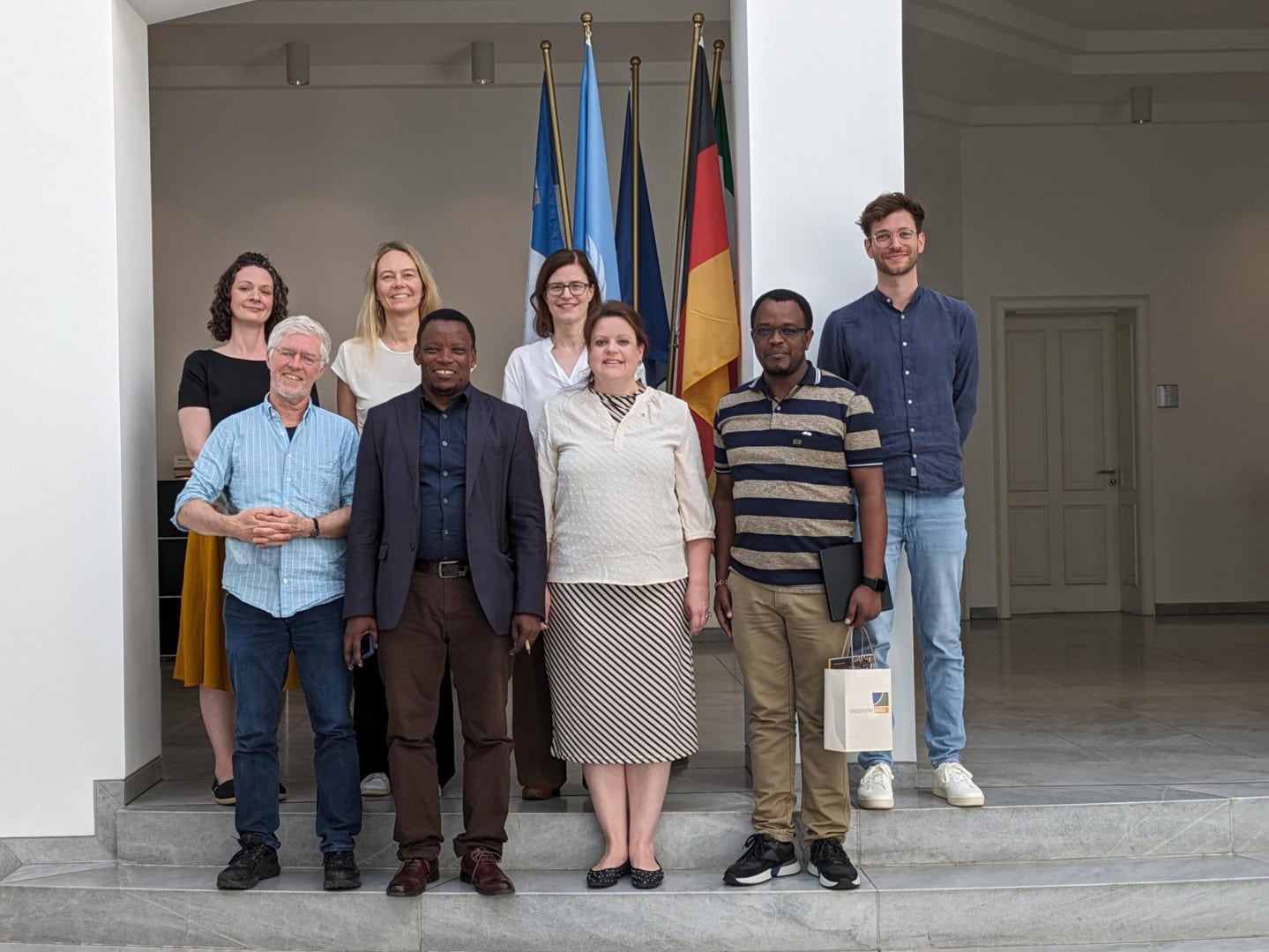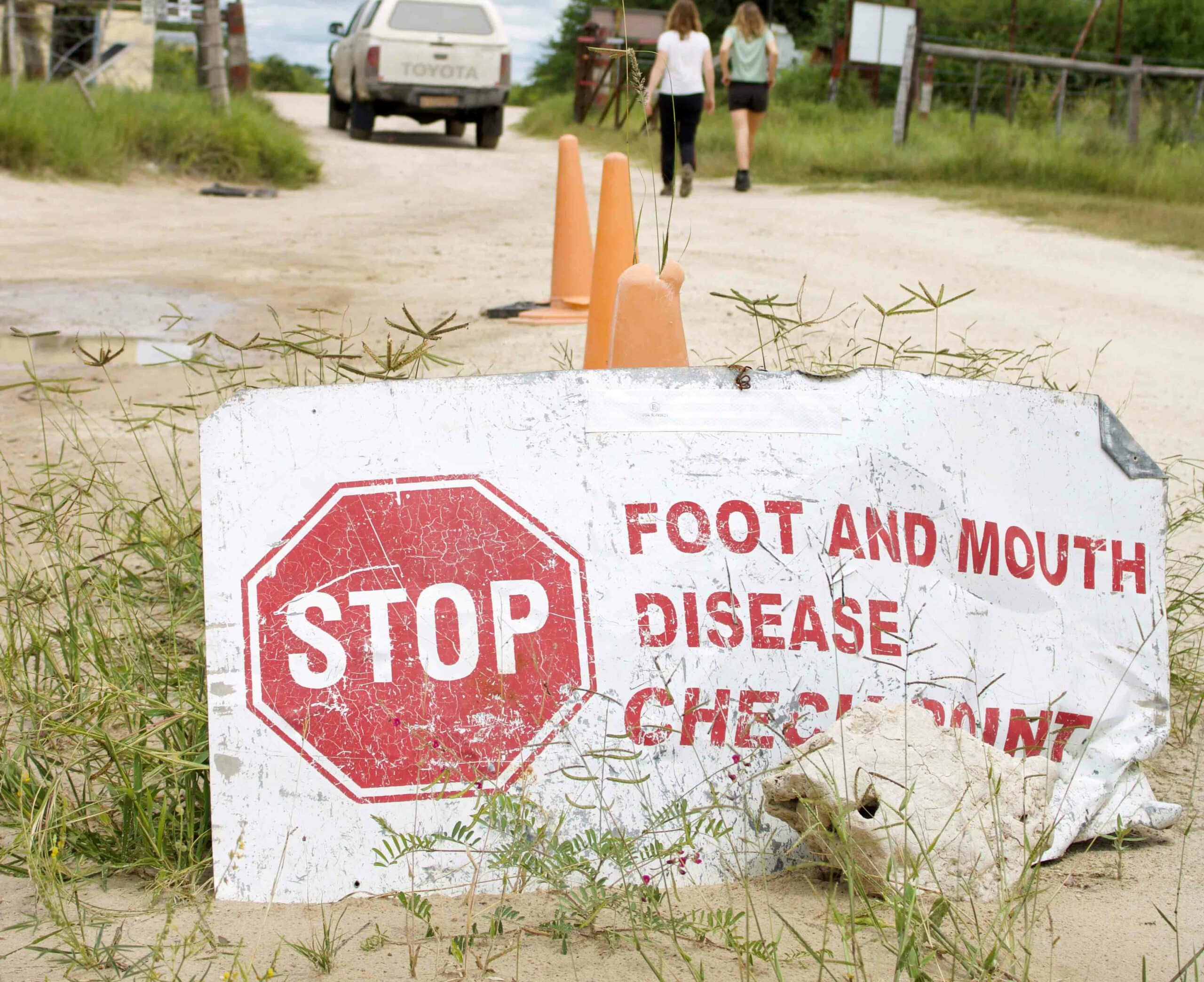CRC TRR 228 Project B02
Future Infections
Linking social-ecological transformations and arbovirus prevalence
B02 Future Infections
Vision
Improve understanding of the impact of large-scale land-use changes like conservation, agricultural intensification, and road development on facilitating the introduction and spread of vector-borne pathogens into a new environment.
Project Summary
The spread of infectious mosquito-borne diseases, which significantly impact human well-being and future livelihoods, is driven by land cover and land use changes, including shifts in livestock and human densities, along with socio-ecological transformations. Additionally, climate change, specifically rising temperatures, shifting rainfall patterns, and extreme weather events like floods, alter vegetation growth and its spatial distribution and affect human and livestock health by increasing mosquito populations and, consequently increasing risks of disease outbreaks. Agricultural changes, including irrigation, intensification, and invasive weeds, further heighten these risks. So far we observed a shift in mosquito communities between conserved landscapes and human settlements. In the Kavango-Zambezi Transfrontier Conservation Area (KAZA), mosquitoes fed on wildlife in conserved areas but switched to humans and livestock in rangelands, where pathogen-transmitting species were more abundant. Mosquito diversity declined with wildlife refaunation, resembling human settlements, particularly in high-elephant-density areas, highlighting the need for balanced ecosystem restoration. We detected arboviruses like West Nile virus (WNV), Bagaza virus, and Rift Valley Fever virus (RVFV) in livestock in Namibia and Kenya, indicating human exposure. However, agro-pastoralist communities in the Kenyan Rift Valley (KRV) lacked arboviral knowledge. Additionally, invasive alien plants (IAPs) like Parthenium and Prosopis enhanced mosquito survival, with Parthenium DNA found in plant-sugar-fed mosquitoes. These factors—shifting mosquito communities, arbovirus circulation, and expansion of IAPs—suggest rising human infection risks in changing landscapes. In the future we plan to examine impacts of urbanization, IAPs, and climate change on mosquito-borne diseases in KAZA and KRV by using and developing advanced remote sensing (RS) techniques. Combining RS and land surface modelling, we intend to assess how droughts, heat waves, and floods interact with IAPs to influence mosquito communities and their disease transmission. Understanding risk factors and human exposure to arboviruses is crucial, particularly through socio-anthropological studies. Rainfall intensity, open water longevity, air temperature and humidity are key factors in mosquito breeding and disease spread. Using modelling, we plan to simulate changes in mosquito abundance and arboviral prevalence under different climate and land-cover scenarios, including dynamics in dominant plant functional types. To analyse disease-spreading insect distribution, we will map vegetated habitats in drought- and flood-prone areas, focusing on invasive plant-driven land-cover changes. Spaceborne and drone-based RS will be employed to evaluate the role of IAPs, particularly Parthenium hysterophorus, in future disease prevalence. These insights will inform key stakeholders in the KAZA and KRV how to better predict and possibly prevent future outbreaks of mosquito-borne viruses.
Research Regions: KAZA TFCA, Kenyan Rift Valley
Problem Statement
Conservation, agricultural intensification, and infrastructural development are land-use changes happening across rural parts of eastern and southern Africa. Against the backdrop of climate change, these changes are at the expense of pastoralism and small-scale agriculture. In the Kenyan Rift valley (KRV), these practices are complemented by the creation of community-managed conservancies, while in southern Africa transboundary conservation areas such as the Kavango Zambezi Transfrontier Conservation Area (KAZA) park have been established. These land use changes are meant to improve livelihoods through tourism, employment creation and transportation. However, conservation is associated with increased human-livestock-wildlife interactions and the emergence of arboviral diseases. Other land use changes such as agricultural intensification and major infrastructural development can facilitate the spread of invasive plants which may further influence distribution patterns of arboviruses and their vectors. We therefore intend to use a One health approach to evaluate the effect of these landscape changes on arboviral disease.
Key Questions
- How do pastoralists and agro-pastoralists perceive the growing risk of zoonotic arboviral diseases and is this linked to socio-ecological transformations?
- How do major land use and biodiversity changes influence arboviral disease emergence and risk?
- Do invasive plants influence life history traits of disease vectors and subsequently their competence?
- Can we model mosquito abundance and arboviral prevalence under different climate and land-cover scenarios to better predict and possibly prevent future outbreaks of mosquito-borne diseases?
Methodology
- Semi-structured interviews
- Questionnaires
- Soil and rangeland quality analysis
- Analysis of wildlife diversity and density
- Analysis of arbovirus infection rates in mosquitoes, small mammals and cattle across different land-use types
- Morphological and competence assessment of mosquitos in relation to invasive plant litter
- Spaceborne and drone-based remote sensing
Outlook for Phase III
The spread of infectious mosquito-borne diseases, significantly impacting human well-being and futures, is driven by land-cover and land-use changes, including shifts in livestock and human densities, along with socio-ecological transformations. Additionally, climate change, specifically rising temperatures, shifting rainfall patterns, and extreme weather events like floods, alter vegetation growth and its spatial distribution and affect human and livestock health by increasing mosquito populations and consequently increasing risks of disease outbreaks. Agricultural changes, including irrigation, intensification, and invasive weeds, further heighten these risks.
In the previous phase, we observed a shift in mosquito communities between conserved landscapes and human settlements. In the Kavango-Zambezi Transfrontier Conservation Area (KAZA), mosquitoes fed on wildlife in conserved areas but switched to humans and livestock in rangelands, where pathogen-transmitting species were more abundant. Mosquito diversity declined with wildlife refaunation, resembling that found near human settlements, particularly in high-elephant-density areas, highlighting the need for balanced ecosystem restoration. We detected arboviruses like West Nile virus (WNV), Bagaza virus, and Rift Valley Fever virus (RVFV) in livestock in Namibia and Kenya, indicating human exposure. However, agropastoralist communities in the Kenyan Rift Valley (KRV) lacked arboviral knowledge.
Additionally, invasive alien plants (IAPs) like Parthenium and Prosopis enhanced mosquito survival, with Parthenium DNA found in plant-sugar-fed mosquitoes. These factors – shifting mosquito communities, arbovirus circulation, and expansion of IAPs – suggest rising human infection risks in changing landscapes.
In the next funding phase, we will examine the impacts of urbanization, IAPs, and climate change on mosquito-borne diseases in KAZA and KRV by using and developing advanced remote sensing (RS) techniques. Combining RS and land surface modelling, we will assess how droughts, heat waves, and floods interact with IAPs to influence mosquito communities and their disease transmission. Understanding risk factors and human exposure to arboviruses is crucial, particularly through socio-anthropological studies. Rainfall intensity, open-water longevity, air temperature and humidity are key factors in mosquito breeding and disease spread. Using modelling, we will simulate changes in mosquito abundance and arboviral prevalence under different climate and land-cover scenarios, including dynamics in dominant plant functional types. To analyse disease-spreading insect distribution, we will map vegetated habitats in drought- and flood-prone areas, focusing on invasive plant-driven land-cover changes. Spaceborne and drone-based RS will be employed to evaluate the role of IAPs, particularly Parthenium hysterophorus, in future disease prevalence. These insights will enable us to better predict outbreaks of mosquito-borne viruses, allowing key stakeholders in the KAZA and KRV to take preventive future actions.
Key Findings from Phase II
Key Findings from Phase I
We found that elephant densities in KAZA affected mosquito species composition as well as mosquito densities. Similarly, in the KRV land-use changes caused by invasive plants like Parthenium, Prosopis and Lantana had a strong effect on mosquito community composition. Several pathogenic arboviruses, like West Nile virus that can cause encephalitis in humans were found in Cx. univittatus mosquitoes in KAZA. In total, we detected ten strains of WNV which grouped in two different phylogenetic clades. Our data indicate that two different variants were simultaneously circulating in Namibia and suggest that WNV may contribute to unknown disease aetiologies. In addition, novel orthobunya- and orbiviruses that are likely to cause malformations and abortions in livestock, were detected in mosquitoes and midges in KAZA. The presence of such a great variety of infectious pathogens may be responsible for high levels of uncertainties in shaping the future.
Relation to the CRC
B02 embraces the CRC concept of bridging boundaries by improving our understanding of how shifting bio-cultural boundaries may facilitate the introduction of vector-borne pathogens into a new environment. The focus is on large-scale land use changes such as conservation, agricultural intensification, and road development that present significant socio-ecological changes. Together with climate change these changes may have unintended side-effects on human and animal health. Emphasis will be on vector abundance/diversity and prevalence of vector-borne zoonotic diseases, and how the creation of conservancies, the accidental introduction and spread of invasive plants (resulting from agricultural intensification), and the construction of roads favour disease emergence. The focus will be on high-risk communities in the KAZA and KRV regions especially pastoral communities and how the resulting ecological and behavioural changes impact rural livelihoods. This work will be in collaboration with CRC projects A01, A02, A04, A05, B01, and C07.
Publications
Agha, S.B., Alvarez, M., Becker, M., Fèvre, EM., Junglen, S., Borgemeister, C. 2021. Invasive alien plants in Africa and the emergence of arboviral diseases – A review and research outlook. Viruses 13 (1), 32. DOI
Chiuya T, Fevre E.M., Junglen S., Borgemeister C., 2023. Understanding knowledge, attitude and perception of Rift Valley fever in Baringo South, Kenya: A cross-sectional study. PLOS Glob Public Health. 2023 Sep 12;3(9). DOI
Chiuya, T., Fèvre, E. M., Okumu, N. O., Abdi, A. M., Junglen, S., Borgemeister, C. 2024. Exposure to Arboviruses in Cattle: Seroprevalence of Rift Valley Fever, Bluetongue, and Epizootic Hemorrhagic Disease Viruses and Risk Factors in Baringo County, Kenya.” Pathogens, 13(8), 613. DOI
Guggemos, H., Fendt, M., Hermanns, K., Hieke, C., Heyde, V., Mfune, JKE, Borgemeister, C., Junglen, S. 2021. ‘Orbiviruses in biting midges and mosquitoes from the Zambezi region, Namibia’, Journal of General Virology, 102(9). DOI
Guggemos, H., Fendt, M., Hieke, C., Heyde, V., Mfune, JKE, Borgemeister, C., Junglen, S. 2021 Simultaneous circulation of two West Nile virus lineage 2 clusters and Bagaza virus in the Zambezi region, Namibia. PLoS Neglected Tropical Diseases, 15(4): e0009311. DOI
Guggemos, H. D., Kopp, A., Voigt, K., Fendt, M., Graff, S. L., Mfune, J. K. E., Borgemeister, C., Junglen, S. 2024. Eilat Virus Isolated from Culex Univittatus Mosquitoes from the Namibian Zambezi Region Influences in Vitro Superinfection with Alpha- and Flaviviruses in a Virus-Species-Dependent Manner. PLoS ONE 19(12):1–16. DOI
Madzingira, O., Munzel, H., Simasiku, N. M., Lucas, L. T., Mwenda, E. N., Chinyoka, S., Tjipura-Zaire, G., Shilongo, F., Borgemeister, C., Khaiseb, S., Chitanga, S., Junglen, S. 2024. Seroprevalence of Brucella Spp. and Rift Valley Fever Virus Infections in Communal Pastoral Cattle at the Wildlife-Livestock Interface, Zambezi Region, Namibia. Frontiers in Veterinary Science 11. DOI
Osei-Owusu, J., Aidoo, O.F., Dofuor, A.K., Eshun, F., Gaikpa, D.S., Vigbedor, B.Y., Turkson, B.K., Ochar, K., Opata, J., Opoku, M., Ninsin, K.D. & C. Borgemeister, 2023. Buruli ulcer in Africa: Geographical distribution, ecology, risk factors, diagnosis, and indigenous plant treatment options – A comprehensive review. Heliyon. DOI
van Dam, A., van Engelen, W., Müller-Mahn, D., Agha, S., Junglen, S., Borgemeister, C., & Bollig, M. (2023). Complexities of multispecies coexistence: Animal diseases and diverging modes of ordering at the wildlife–livestock interface in Southern Africa. Environment and Planning E: Nature and Space, 0(0). Full Text




